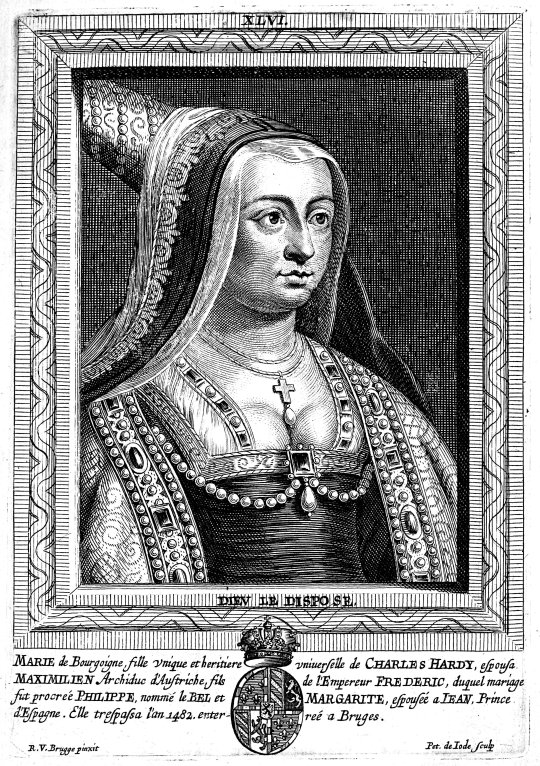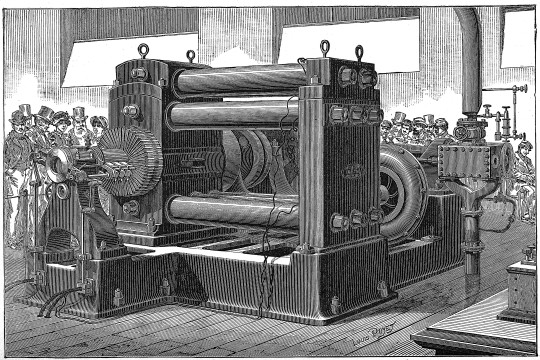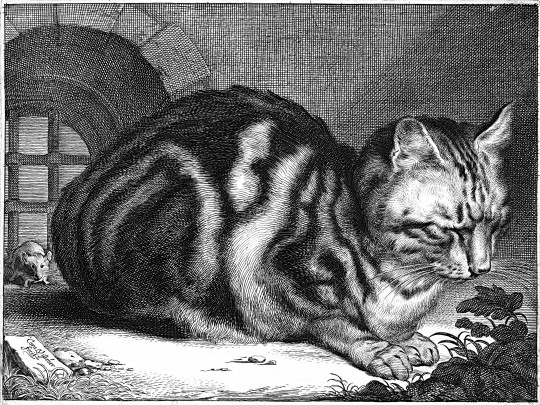Don't wanna be here? Send us removal request.
Text
Procris

In Greek mythology, Procris was an Athenian princess, the third daughter of Erechtheus, king of Athens and his wife, Praxithea. Homer mentions her in the Odyssey as one of the many dead spirits Odysseus saw in the Underworld. In Greek mythology, Princess Procris dies after being accidentally struck by a javelin thrown by her husband, Cephalus. Procris, suspicious of Cephalus's faithfulness, follows him while he's hunting, and hides in the bushes. Cephalus, hearing rustling in the leaves, mistakes her for an animal and throws his javelin, mortally wounding her.
The above engraving entitled Procris, dated 1539, was created by Georg Pencz (c. 1500-1550). Pencz was among the German “Little Masters” and greatly influenced by Albrecht Durer.
(Courtesy: Internet Archive, Wikipedia, The Cleveland Museum of Art, Arthur M. Hind: “A Short History of Engraving & Etching”, 1911.)
0 notes
Text
Tools of the Engraver & Etcher

From the book "A Short History of Engraving & Etching" by Arthur Hind (British Museum), 1911.
0 notes
Text
Richard II or Richard de Bordeaux

Richard II (1367–1400), also known as Richard de Bordeaux, was King of England from 1377 until he was deposed in 1399. Richard was the younger brother of Edward of Angoulême, upon whose death Richard, at three years of age, became second in line to the throne after his father. Upon the death of Richard's father prior to the death of Edward III, Richard, by primogeniture, became the heir apparent to the throne. With Edward III's death the following year, Richard succeeded to the throne at the age of ten.
This engraving done by George Vertue (1684-1756) appeared in the 1st volume of “Vetusta Monumenta.” It is the title of a published series of illustrated antiquarian papers on ancient buildings, sites, and artefacts, mostly those of Britain, published at irregular intervals between 1718 and 1906 by the Society of Antiquaries of London. The folio sized papers appearing in Vol. 1, (published by: Londini [Society of Antiquaries], 1746) were first published individually between 1718 and 1747. The emphasis was on the large and detailed illustrations, initially high quality engravings, which conveyed information on the subject matter in an accessible and economical way.
(Courtesy: Internet Archives & Wikipedia)
0 notes
Text
Mary of Burgundy or Marie de Bourgogne

Mary of Burgundy or Marie de Bourgogne (1457-1482), member of the House of Valois-Burgundy (Duchy and county of Burgundy and the Burgundian Netherlands). Married Maximilian of Austria (the future Holy Roman Emperor) and changed the dynasty from Valois to Habsburg. Mary died at the age of 27, from an accident when she fell off her horse during a falcon hunt.
This engraving created by the great Flemish engraver Pieter de Jode I (1570-1634) from a portrait painting by Roger van Brugge. There is very little information about van Brugge. According to my research, van Brugge was a Flemish painter born in the early 15th century. He studied under Jan van Eyck in the 1420’s and lived permanently in Bruges. Courtesy: Internet Archive, Wikipedia
3 notes
·
View notes
Text
Edison’s Dynamo-Electric Machine

An engraved illustration by Louis Poyet appearing in “The wonders of the universe” (published in 1885). Edison’s Dynamo-Electric Machine presented at the Paris Electrical Exhibition of 1881.
Louis Poyet (1846-1913) was a French draftsman, engraver, and illustrator, known for his work alongside popularizers of science from the late 19th century onward. Based in Paris, Poyet opened an engraving workshop. He worked as an illustrator-engraver of vignettes for the magazine La Nature, where he remained until his death. Poyet was also an illustrator and engraver of industrial images for the collection “Les grandes usines”. (Courtesy: Internet Archive, Wikipedia)
0 notes
Text
Touch - Touché

This engraving by Hendrick Goltzius (1558–1617) is fifth in a set of 5 engravings depicting the Senses.
Goltzius was a German born Dutch printmaker, draftsman and painter. He was the leading Dutch engraver of the early Baroque period. Hendrick was also one of the most important print publisher of his time. He is most widely known today for the Mannerist engravings that he and his workshop produced during the period between 1585 and 1589. (Courtesy: The Met Fifth Avenue, NY and Wikipedia)
0 notes
Text
Villa Mattei on Mount Celio

On one side of the Celio, one of the legendary seven hills above which Rome was founded, is Villa Celimontana. Called first Villa Mattei, it once belonged to the Mattei family and has now become a public park. It still preserves a number of Roman finds such as altars, columns and capitals, scattered throughout its gardens and of course the Egyptian obelisk. (one of many obelisks transported to Rome from Egypt) The House of Mattei was one of the most powerful noble families of Rome during the Middle Ages and early modern era, holding high positions in the papal curia and government office. The family amassed significant art collections under art enthusiast Ciriaco Mattei. Mattei became Conservatore di Roma and in 1582 he began construction on the Villa Celimontana. He died in 1610.
This engraving done by Giuseppe Vasi (1710-1782) an Italian engraver and architect. From volume 9 in the collection “Delle magnificenze di Roma antica e moderna”. Publisher: IN ROMA, Nella Stamperia di Niccolo, e Marco Pagliarini, MDCCLIX (1759). (Courtesy: Internet Archive, Roma SPQR, Wikipedia)
0 notes
Text
Censer - Encensoir

From page 32 of the book "Meister des ornamentstichs, eine auswahl aus vier jahrhunderten" by Peter Jessen, published in 1900.
A splendid engraving from Martin Schongauer (c. 1450-53,-1491), an Alsatian engraver and painter. He was the most important printmaker north of the Alps before Albrecht Dürer. (Courtesy: Internet Archive, Wikipedia)
0 notes
Text
Le gros chat - The Big Cat
Engraving by CORNELIS VISSCHER, 1657 ... a Dutch Golden Age artist and engraver.

1 note
·
View note